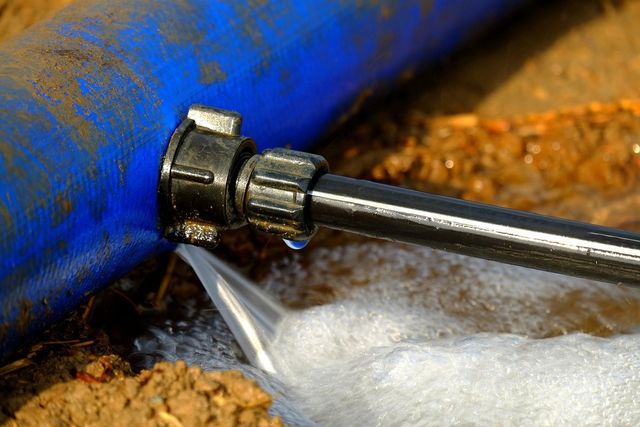Exactly how to Examine If Your Residence Has a Hidden Leak
Exactly how to Examine If Your Residence Has a Hidden Leak
Blog Article
Everyone may have their private conception involving Leaking water lines.

Early detection of dripping water lines can reduce a prospective calamity. Some little water leaks might not be visible.
1. Analyze the Water Meter
Every residence has a water meter. Examining it is a guaranteed way that helps you discover leaks. For beginners, turn off all the water sources. Guarantee no person will certainly purge, utilize the faucet, shower, run the washing device or dish washer. From there, go to the meter as well as watch if it will certainly alter. Because no one is using it, there need to be no movements. That indicates a fast-moving leak if it moves. Furthermore, if you detect no changes, wait a hr or more and also examine back once again. This means you may have a sluggish leak that might even be below ground.
2. Inspect Water Usage
Examine your water bills and also track your water usage. As the one paying it, you should see if there are any type of inconsistencies. If you detect sudden changes, in spite of your usage coinciding, it implies that you have leaks in your plumbing system. Keep in mind, your water costs need to fall under the exact same variety monthly. A sudden spike in your costs suggests a fast-moving leak.
On the other hand, a consistent rise on a monthly basis, despite the same practices, shows you have a slow leak that's additionally gradually rising. Call a plumber to extensively examine your home, especially if you feel a warm area on your floor with piping below.
3. Do a Food Coloring Test
When it comes to water intake, 30% comes from toilets. If the shade in some way infiltrates your bowl during that time without flushing, there's a leak between the container as well as dish.
4. Asses Outside Lines
Do not fail to remember to examine your outdoor water lines too. Examination spigots by connecting a yard hose. Needs to water leak out of the link, you have a loosened rubber gasket. Replace this and also ensure all links are tight. It will assist obtain it skillfully checked out as well as kept yearly if you've got a sprinkler system. One tiny leak can squander tons of water and spike your water costs.
5. Evaluate the scenario and evaluate
House owners must make it a practice to check under the sink counters and also inside cabinets for any type of bad odor or mold and mildew development. These two red flags indicate a leak so prompt focus is needed. Doing regular evaluations, also bi-annually, can conserve you from a major issue.
Inspect for stainings and also deteriorating as a lot of pipelines as well as home appliances have a life expectancy. If you believe dripping water lines in your plumbing system, don't wait for it to escalate.
Early detection of dripping water lines can reduce a potential catastrophe. Some tiny water leakages may not be noticeable. Examining it is a surefire means that helps you discover leakages. One small leak can lose lots of water as well as increase your water costs.
If you suspect leaking water lines in your plumbing system, don't wait for it to rise.
WARNING SIGNS OF WATER LEAKAGE BEHIND THE WALL
PERSISTENT MUSTY ODORS
As water slowly drips from a leaky pipe inside the wall, flooring and sheetrock stay damp and develop an odor similar to wet cardboard. It generates a musty smell that can help you find hidden leaks.
MOLD IN UNUSUAL AREAS
Mold usually grows in wet areas like kitchens, baths and laundry rooms. If you spot the stuff on walls or baseboards in other rooms of the house, it’s a good indicator of undetected water leaks.
STAINS THAT GROW
When mold thrives around a leaky pipe, it sometimes takes hold on the inside surface of the affected wall. A growing stain on otherwise clean sheetrock is often your sign of a hidden plumbing problem.
PEELING OR BUBBLING WALLPAPER / PAINT
This clue is easy to miss in rooms that don’t get much use. When you see wallpaper separating along seams or paint bubbling or flaking off the wall, blame sheetrock that stays wet because of an undetected leak.
BUCKLED CEILINGS AND STAINED FLOORS
If ceilings or floors in bathrooms, kitchens or laundry areas develop structural problems, don’t rule out constant damp inside the walls. Wet sheetrock can affect adjacent framing, flooring and ceilings.
https://www.servicemasterbyzaba.com/blog/how-to-detect-water-leakage-in-walls/

I was brought to that report about Detecting hidden plumbing leaks through a friend on another site. Liked our blog? Please share it. Help another person find it. Thank-you for your time invested reading it.
Report this page